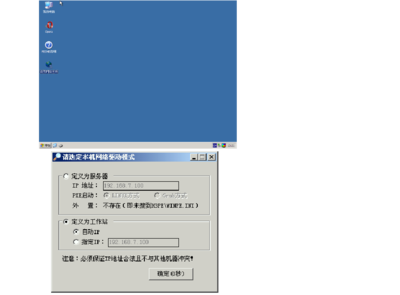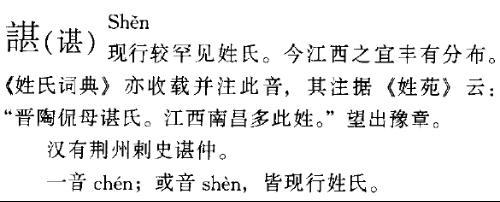SCSI协议是映射了若干的传输协议,包括并行SCSI,IPI,IEEE-1394和FC协议。这些传输协议有特定的I/O和距离限制因素。
The iSCSI protocol defined in this document describes a means oftransporting SCSI packets over TCP/IP (see [RFC791],[RFC793], [RFC1035], [RFC1122]),providing for an interoperable solution which can take advantage ofexisting Internet infrastructure, Internet management facilities,and address distance limitations.iSCSI协议定义在这个文档中描述一种手段传输SCSI包通过TCP/IP,提供一个共同的方案,利用已存在的Internet基础、管理情况和地址距离限制。
2. Definitions and Acronyms 定义和缩写
2.1 Definitions 定义
- Alias: An alias string can also be associated with an iSCSI Node.The alias allows an organization to associate a user-friendlystring with the iSCSI Name. However, the alias string is not asubstitute for the iSCSI Name.
别名:别名字符串可以用来关联一个iSCSI节点。别名允许一个组织去关联一个用户友好的字符串iSCSI名字。当然这个别名字符串不能替代iSCSI节点名。
- CID (Connection ID): Connections within a session areidentified by a connection ID. It is a unique ID for thisconnection within the session for the initiator. It is generated bythe initiator and presented to the target during login requests andduring logouts that close connections.
CID(连接ID):连接包含在一个session中,被定义为一个连接ID。它是唯一的ID为了这个连接到启动设备的session。它产生于启动设备和被介绍给目标设备,在注册请求期间和关闭连接的退出请求期间。
- Connection: A connection is a TCP connection. Communicationbetween the initiator and target occurs over one or more TCPconnections. The TCP connections carry control messages, SCSIcommands, parameters, and data within iSCSI Protocol Data Units(iSCSI PDUs).
连接:连接时一个TCP连接。消息在启动设备和目标设备之间出现通过TCP连接方式。这个TCP连接包括控制信息、SCSI命令、参数和包含iSCSI协议数据单位的数据。
- iSCSI Device: A SCSI Device using an iSCSI service deliverysubsystem. Service Delivery Subsystem is defined by [SAM2] as atransport mechanism for SCSI commands and responses.
iSCSI设备:SCSI设备使用iSCSI服务投递子系统。投递子系统服务定义在传输机器为了SCSI命令和请求。
- iSCSI Initiator Name: The iSCSI Initiator Name specifies theworldwide unique name of the initiator.
iSCSI 启动设备名:这个iSCSI启动设备名指定全世界独一无二的名字给这个启动设备。
- iSCSI Initiator Node: The "initiator". The word "initiator"has been appropriately qualified as either a port or a device inthe rest of the document when the context is ambiguous. Allunqualified usages of "initiator" refer to an initiator port (ordevice) depending on the context.
- iSCSI Layer: This layer builds/receives iSCSI PDUs andrelays/receives them to/from one or more TCP connections that forman initiator-target "session".
iSCSI层:层建立/接收iSCSI协议数据单元,转发/接收它们从/到一个或多个TCP连接在从启动设备和目标设备之间的会话。
- iSCSI Name: The name of an iSCSI initiator or iSCSItarget.
iSCSI名:名字在启动设备或目标设备。
- iSCSI Node: The iSCSI Node represents a single iSCSI initiatoror iSCSI target. There are one or more iSCSI Nodes within a NetworkEntity. The iSCSI Node is accessible via one or more NetworkPortals. An iSCSI Node is identified by its iSCSI Name. Theseparation of the iSCSI Name from the addresses used by and for theiSCSI Node allows multiple iSCSI Nodes to use the same address, andthe same iSCSI Node to use multiple addresses.
iSCSI节点:iSCSI节点描述一个单一的iSCSI启动设备或iSCSI目标设备。一个或者更多的节点在一个网络实体中。节点是可访问的通过一个或者更多的网络入口。一个节点被定义为它的iSCSI名称。iSCSI名字的分离从使用的地址foriscsi节点,允许多个节点去使用一样的地址,同时一样的节点使用多个地址。
- iSCSI Target Name: The iSCSI Target Name specifies theworldwide unique name of the target.
iSCSI 目标设备名: iSCSI目标设备名描述一个全世界唯一的名字给这个设备。
- iSCSI Target Node: The "target".
iSCSI 目标设备节点:又叫“目标设备”
- iSCSI Task: An iSCSI task is an iSCSI request for which aresponse is expected.
iSCSI任务:一个iSCSI任务是一个iSCSI请求,被期望的回答。
- iSCSI Transfer Direction: The iSCSI transfer direction isdefined with regard to the initiator. Outbound or outgoingtransfers are transfers from the initiator to the target, whileinbound or incoming transfers are from the target to theinitiator.
iCSCI传输方向:iCSCI传输方向定义关于启动设备。出站或者传出传输是从启动设备到目标设备的传输,同时入站或者进站传输是从目标设备到启动设备的传输。
- ISID: The initiator part of the Session Identifier. It isexplicitly specified by the initiator during Login.
ISID: 启动设备角色的会话标识符。在启动设备注册期间被明确地定义。
- I_T nexus: According to [SAM2], the I_T nexus is arelationship between a SCSI Initiator Port and a SCSI Target Port.For iSCSI, this relationship is a session, defined as arelationship between an iSCSI Initiator's end of the session (SCSIInitiator Port) and the iSCSI Target's Portal Group. The I_T nexuscan be identified by the conjunction of the SCSI port names; thatis, the I_T nexus identifier is the tuple (iSCSI Initiator Name +',i,'+ ISID, iSCSI Target Name + ',t,'+ Portal Group Tag).
I_T nexus:根据[SAM2],I_Tnexus是一种关系在SCSI启动设备角色和SCSI目标设备角色之间产生。对于iSCSI,这种关系是一个会话,定义类似关系在启动设备会话的结尾部分(SCSI启动设备角色)和iSCSI目标设备的入口组(SCSI目标设备角色)。I_Tnexus 可以被支持在SCSI角色名的连接,就是说,这个I_T nexus标记是一组数据(iSCSI Initiator Name+ ',i,'+ ISID, iSCSI Target Name + ',t,'+ Portal Group Tag).
Network Entity: The Network Entity represents a device orgateway that is accessible from the IP network. A Network Entitymust have one or more Network Portals, each of which can be used togain access to the IP network by some iSCSI Nodes contained in thatNetwork Entity.
网络团体:网络团体表现为可通过IP网络访问的一个驱动或者网关。一个网络团体必须有一个或者多个网络入口,,每一个都可以使用,通过IP网络访问到一些iSCSI节点容器在网络团体中。
- Network Portal: The Network Portal is a component of a NetworkEntity that has a TCP/IP network address and that may be used by aniSCSI Node within that Network Entity for the connection(s) withinone of its iSCSI sessions. A Network Portal in an initiator isidentified by its IP address. A Network Portal in a target isidentified by its IP address and its listening TCP port.
网络入口:网络如后是一个网络团队的组件,有一个TCP/IP的网络地址可以使用给一个iSCSI节点,在一个ISCSI会话中提供连接。一个网络如后在启动设备中间被识别为一个IP地址。一个网络入口在目标设备被识别为一个IP地址+监听端口。
- Originator: In a negotiation or exchange, the party thatinitiates the negotiation or exchange.
发起人:在一个协商或交换中,协商或发起的启动设备一方。
- PDU (Protocol Data Unit): The initiator and target dividetheir communications into messages. The term "iSCSI protocol dataunit" (iSCSI PDU) is used for these messages.
PDU,协议数据单元。启动设备和目标设备分割他们的通讯到消息中。
- Portal Groups: iSCSI supports multiple connections within thesame session; some implementations will have the ability to combineconnections in a session across multiple Network Portals. A PortalGroup defines a set of Network Portals within an iSCSI NetworkEntity that collectively supports the capability of coordinating asession with connections spanning these portals. Not all NetworkPortals within a Portal Group need participate in every sessionconnected through that Portal Group. One or more Portal Groups mayprovide access to an iSCSI Node. Each Network Portal, as utilizedby a given iSCSI Node, belongs to exactly one portal group withinthat node.
入口组:iSCSI支持多重连接在一个同样的会话中。部分实施将有能力结合连接在一个会话中访问多个网络接口。一个入口组定义了一套网络入口在一个iSCSI网络团体。
- Portal Group Tag: This 16-bit quantity identifies a PortalGroup within an iSCSI Node. All Network Portals with the sameportal group tag in the context of a given iSCSI Node are in thesame Portal Group.
入口组标签:这16字节大小识别一个入口组在一个iSCSI节点。所有的网络入口具有一样的入口组标签在一个给定iSCSI节点的上下文中是一样的入口组。
- Recovery R2T: An R2T generated by a target upon detecting theloss of one or more Data-Out PDUs through one of the followingmeans: a digest error, a sequence error, or a sequence receptiontimeout. A recovery R2T carries the next unused R2TSN, but requestsall or part of the data burst that an earlier R2T (with a lowerR2TSN) had already requested.
- Responder: In a negotiation or exchange, the party thatresponds to the originator of the negotiation or exchange.
应答:
- SCSI Device: This is the SAM2 term for an entity that containsone or more SCSI ports that are connected to a service deliverysubsystem and supports a SCSI application protocol. For example, aSCSI Initiator Device contains one or more SCSI Initiator Ports andzero or more application clients. A Target Device contains one ormore SCSI Target Ports and one or more device servers andassociated logical units. For iSCSI, the SCSI Device is thecomponent within an iSCSI Node that provides the SCSIfunctionality. As such, there can be at most, one SCSI Devicewithin a given iSCSI Node. Access to the SCSI Device can only beachieved in an iSCSI normal operational session. The SCSI DeviceName is defined to be the iSCSI Name of the node.
SCSI设备
- SCSI Layer: This builds/receives SCSI CDBs (Command DescriptorBlocks) and relays/receives them with the remaining command execute[SAM2] parameters to/from the iSCSI Layer.
SCSI标签
- Session: The group of TCP connections that link an initiatorwith a target form a session (loosely equivalent to a SCSI I-Tnexus). TCP connections can be added and removed from a session.Across all connections within a session, an initiator sees one andthe same target.
会话
- SCSI Initiator Port: This maps to the endpoint of an iSCSInormal operational session. An iSCSI normal operational session isnegotiated through the login process between an iSCSI initiatornode and an iSCSI target node. At successful completion of thisprocess, a SCSI Initiator Port is created within the SCSI InitiatorDevice. The SCSI Initiator Port Name and SCSI Initiator PortIdentifier are both defined to be the iSCSI Initiator Name togetherwith (a) a label that identifies it as an initiator portname/identifier and (b) the ISID portion of the sessionidentifier.
SCSI 启动端口
- SCSI Port: This is the SAM2 term for an entity in a SCSIDevice that provides the SCSI functionality to interface with aservice delivery subsystem. For iSCSI, the definition of the SCSIInitiator Port and the SCSI Target Port are different.
SCSI端口:
- SCSI Port Name: A name made up as UTF-8 [RFC2279] charactersand includes the iSCSI Name + 'i' or 't' + ISID or Portal GroupTag.
SCSI端口名:一个名子字制作成UTF-8字符,包含iSCSI名+‘i’或’t’+ISID 或者入口组标签。
- SCSI Target Port: This maps to an iSCSI Target PortalGroup.
SCIS目标端口:这映射到一个iSCSI目标入口组。
- SCSI Target Port Name and SCSI Target Port Identifier: Theseare both defined to be the iSCSI Target Name together with (a) alabel that identifies it as a target port name/identifier and (b)the portal group tag.
SCSI目标端口名和SCSI目标端口认证:这里同时有两种定义这个iSCSI目标名。1.一个标签识别它作为一个目标端口名/验证。2.入口组标签。
- SSID (Session ID): A session between an iSCSI initiator and aniSCSI target is defined by a session ID that is a tuple composed ofan initiator part (ISID) and a target part (Target Portal GroupTag). The ISID is explicitly specified by the initiator at sessionestablishment. The Target Portal Group Tag is implied by theinitiator through the selection of the TCP endpoint at connectionestablishment. The TargetPortalGroupTag key must also be returnedby the target as a confirmation during connection establishmentwhen TargetName is given.
SSID(会话ID): 一个会话在iSCSI启动设备和iSCSI目标两者之间被定义为一个会话ID.是由一个启动设备角色(ISID)和一个目标设备角色(Target Portal GroupTag)组成的一个数组。这个ISID是一个明确的规定启动设备会话建立。这个目标入口组标签键值也应该返回目标设备,当目标名称被设定时,目标设备认可在连接建立中。
- Target Portal Group Tag: A numerical identifier (16-bit) foran iSCSI Target Portal Group.
目标入口组标签:一个数字验证,16字节给一个iSCSI 目标入口组
- TSIH (Target Session Identifying Handle): A target assignedtag for a session with a specific named initiator. The targetgenerates it during session establishment. Its internal format andcontent are not defined by this protocol, except for the value 0that is reserved and used by the initiator to indicate a newsession. It is given to the target during additional connectionestablishment for the same session.
TSIH(目标会话识别句柄):一个目标分配标签为了一个制定了名字的启动会话。这个目标产生在会话的连接期间。它的内部格式和内容没有定义在这个协议,出了变量0以外,变量0被保留使用在启动设备去标示一个新的会话。它是规定,目标增加连接的建立给一样的会话。
-------------------------
------------------------
2.2. Acronyms 缩写
Acronym Definition
------------------------------------------------------------
3DES :Triple Data Encryption Standard三倍数据加密标准
ACA:Auto Contingent Allegiance
AEN :Asynchronous Event Notification异步事件通知
AES: Advanced Encryption Standard 超强加密标准
AH: Additional Header (not the IPsec AH!)增加头
AHS: Additional Header Segment 增加头部片段
API :Application Programming Interface 应用程序接口
ASC: Additional Sense Code 增加辨别码
ASCII: American Standard Code for Information Interchange
ASCQ :Additional Sense Code Qualifier
BHS :Basic Header Segment 基础头片段
CBC: Cipher Block Chaining 加密块链模式
CD :Compact Disk 协议盘
CDB :Command Descriptor Block 命令描述块
CHAP :Challenge Handshake AuthenticationProtocol 询问握手认证协议
CID: Connection ID 连接ID
CO : Connection Only 仅连接
CRC :Cyclic Redundancy Check 循环冗余码校验
CRL : Certificate Revocation List 证书吊销列表
CSG :Current Stage
 爱华网
爱华网



